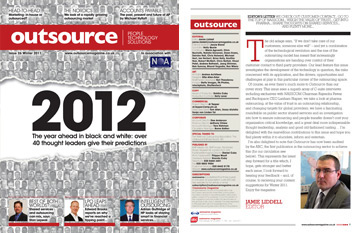Key stakeholders for any project typically come from inside your organisation and are normally those who have endorsed or identified the need for project activity. However they could also be external clients or suppliers, as they might be directly affected by the resulting changes of the project.
They need to be identified prior to the project proposal being discussed and be the driving force and sponsor for the project through all stages from development to training, implementation and support.
The key stakeholder is a pivotal role in the success of any project and they have a number of core responsibilities that they must adhere to.
Understanding the business drivers and ensuring that the project fits with the strategy for their area of the business: a fundamental responsibility – the stakeholder must be able to clearly explain the necessity for their project to be taken on before others and prove its strategic merit.
Providing detailed requirements and a financial plan: every project must have these and is doomed to fail if they’re not completed up front.
Committing the necessary resources: Its key to have individuals from the affected areas involved on any project. They can provide you with instant answers and feedback as to how things do or should work. They are the daily operational link to the eventual user base of the project deliverables and I cannot stress enough the importance and usefulness of having them involved. Agile PM methodologies allow you to have quicker bursts of development and a higher pace of deliverable but if you are using traditional project management techniques and don’t have target resources available, you could be wasting a whole heap of time and reputation if your deliverables don’t match what the client wants.
Taking ownership of appropriate deliverables: the stakeholder needs to take ownership of the appropriate deliverables and make sure that they work against a number of key elements such as mirroring the requirements, process compatibility, usability and performance. They must sign off and take ownership of each deliverable, thus allowing the project to proceed on the right track.
Keeping abreast of project progress and cascading information to others who need to know: the stakeholder must not skip project meetings and rely upon others to keep them up to speed. Similarly, they must also keep affected others or teams up to date with frequent progress reports. This is probably the most often reported symptom of failed projects where key stakeholders become disassociated with a project and it starts to drift, stray from the requirements and fall apart. Stakeholders must stay focused and attend all key project meetings.
Establish the training and support requirements: the stakeholder must identify any effected individuals of their projects and establish the necessary training and support requirements. This will be done in harness with the relevant departments but the stakeholder is responsible for it. A project should not end when the development is finished but when it is fully implemented with full training and relevant support models.
Identifying and resolving any project issues and risks, especially those associated with managing change during the transition phase: it’s up to the stakeholder to identify and acknowledge any potential risk and change associated with their project during the proposal stages. This will obviously be discussed with the project team, PMO or legal representatives prior to the project getting a green light.
Communicating throughout the life of the project: I cannot stress enough the need for strong communication. The least successful projects are the ones that are done in isolation, that people forget about until an email gets sent around heralding its imminent implementation. Requirements or processes sometimes change during project development and without having relevant resource or communication with the targeted business areas, a project will quickly lose resonance and relevance. Managing associated change during the transition phase must be done up front or during the life of the project and not when its ready to be implemented as those reticent to change can quickly sour any implementation.
Project closure: in accordance with good project governance, the stakeholder must perform an analysis of the projects delivery against plan, budget and strategic objectives and sign off and accept the project.
This piece has also been posted on my Outsource Magazine column here and on The Business Value Exchange in my position as CIO ‘Thought Leader’.

